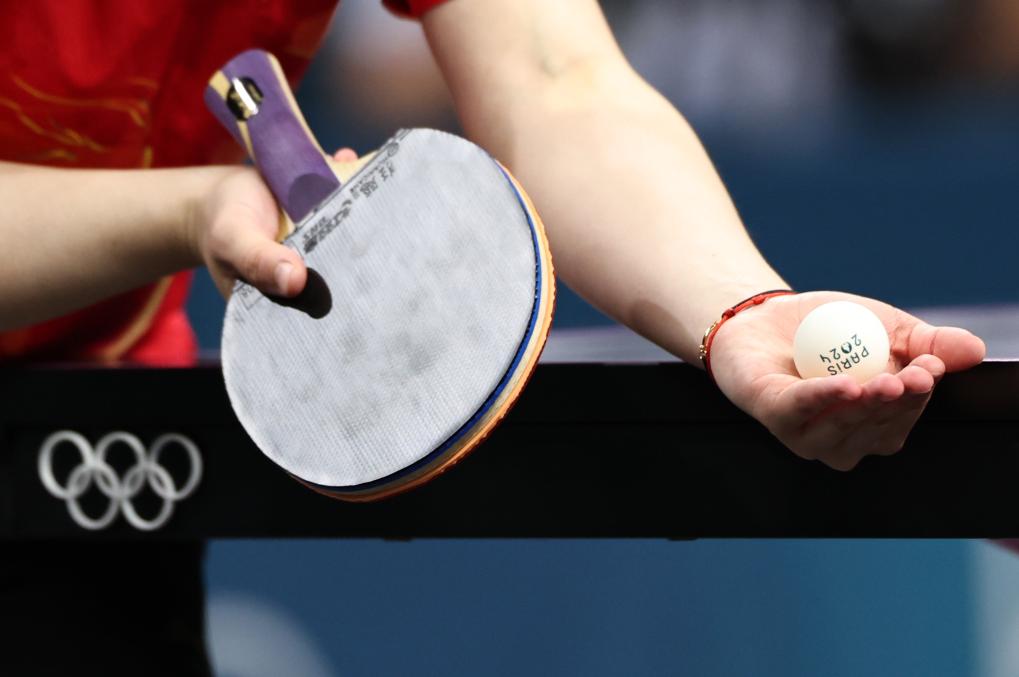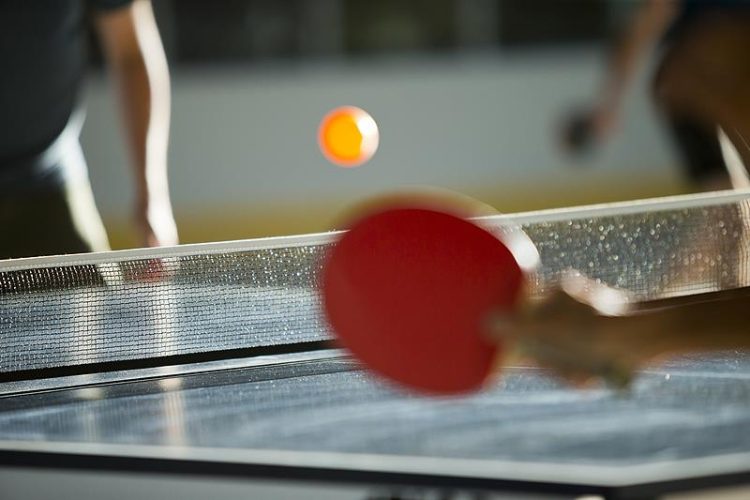Table tennis, a sport celebrated for its rapid pace, incredible skill, and precision, has been a staple of global sports for over a century. Originating in England in the late 19th century, it has since evolved into one of the most popular sports worldwide, with millions of enthusiasts across Asia, Europe, and the rest of the world. While its accessibility and fast-paced nature have contributed to its widespread appeal, the sport’s viewership, particularly in major international tournaments, has faced challenges related to its perceived repetitiveness, lack of drama, and, in some cases, slow evolution in terms of engagement.
To keep up with the demands of modern sports entertainment, many have proposed rule reforms that could make table tennis more exciting for both players and viewers. These reforms, aimed at enhancing the spectacle of the game, could potentially address several key areas, such as match length, the consistency of scoring systems, and even the equipment used in the sport. But will these proposed changes truly lead to a more thrilling experience, or will they simply disrupt the essence of the game?
This article explores whether reforming international table tennis rules could help improve the sport’s competitiveness, fan engagement, and overall viewing experience.
1. Current Challenges in International Table Tennis
Before delving into potential reforms, it is important to examine the current state of international table tennis, particularly from the perspective of viewers and players.
A. Match Length and Pacing Issues
One of the most commonly cited critiques of table tennis is the perceived slowness of matches, especially in singles events. While the sport is known for its lightning-fast rallies, the matches themselves can sometimes be drawn out due to the way games are structured. A typical match in major tournaments can go on for several hours, especially when the game is tied 2-2 in sets, leading to prolonged play. Additionally, the deuce rule—which allows both players to keep playing until one achieves a two-point lead—can make the final stages of a game feel repetitive and slow, which may disengage casual viewers who are not already familiar with the intricacies of the sport.
B. Predictability and Dominance of Top Players
Another issue with the current state of international table tennis is the dominance of a few top players, particularly from countries like China and Japan. With such a concentrated pool of elite talent, the predictability of tournaments, especially in singles events, can make it less exciting for casual spectators. While die-hard fans may appreciate the nuances of a match between Fan Zhendong and Ma Long, casual viewers may find these contests lack the excitement of more unpredictable sports, where a wider range of upsets and surprise winners occur.
C. Lack of Drama and Fan Engagement
Table tennis has the potential to be an incredibly dramatic sport, yet its presentation often fails to translate that excitement into compelling viewing. Unlike basketball, football, or tennis, table tennis matches can sometimes lack dramatic pauses or moments of tension that could elevate the viewing experience. The game progresses quickly, but without a clear, emotional arc that audiences can follow, fans may struggle to connect to the spectacle.
2. The Role of Rule Reforms in Improving Spectacle
To address these challenges, many have called for reforms in international table tennis rules to make the sport more spectacular for viewers while still preserving its core integrity and traditions. Let’s explore some of the key rule reforms that have been proposed, and assess whether they could enhance the competitiveness and spectacle of the game.
A. Changing the Scoring System
One of the most frequently discussed reforms involves changing the scoring system. The current system, where games are played to 11 points per set with a best-of-seven set format, has been in place for several years. While this system is relatively straightforward, critics argue that it lacks the excitement and momentum shifts that other sports, such as tennis, have achieved with different scoring formats.
Potential Reforms:
- Increasing Points Per Set: Some have suggested extending sets to 15 or 21 points instead of the current 11, with the aim of making the rallies longer and allowing for more dramatic comebacks. This format is used in some domestic leagues, and could potentially lead to more gripping moments, where the outcome of a set is less predictable and can shift more dramatically.
- Tie-breaks: The introduction of a tie-break system in matches where players are tied at 10-10 or 15-15 would provide a decisive moment that might lead to more climactic endings. This format, akin to tennis, could add an extra layer of excitement to the game.
- No “Deuce” Rule: Some suggest removing the deuce rule entirely, which can extend games unnecessarily. By creating a more decisive approach—perhaps a time-limited game or a rule that forces a winner after a certain number of rallies—the unpredictability and speed of the match could be increased, appealing more to viewers’ desire for resolution.
B. Reducing the Number of Sets
A possible reform could be reducing the number of sets played in a match, particularly in the early rounds of international tournaments. Many tournaments, including the World Table Tennis Championships and Olympic competitions, often feature best-of-seven sets in singles matches. While this can create tension, it also means that players have to sustain high performance over a long period of time.
Potential Reforms:
- Best-of-5 Sets Format: A best-of-five format could reduce the time it takes for matches to conclude while still providing a fair competition. The shorter length of the match could help keep the action fast-paced, making it easier for casual fans to engage with. This would also give lower-ranked players more opportunities to produce upsets, which could create more surprises and excitement in major events.
- Time Limits Per Match: Another option is to introduce a time limit for each match. This could ensure that games are completed within a reasonable period, avoiding long, drawn-out matches that may cause fatigue for both players and spectators.
C. Equipment Changes for Enhanced Excitement
Another way to increase the spectacle of table tennis is through changes in the equipment used, particularly the ping-pong ball and racquets. While table tennis equipment is highly specialized and standardized for professional competitions, small adjustments in the gear could significantly affect the dynamics of play.
Potential Reforms:
- Changing the Ball Type: Some have proposed experimenting with larger or heavier ping-pong balls, which would alter the speed and spin of the game. A larger ball could reduce the overall speed of rallies, making them easier for fans to follow and understand while still maintaining the sport’s level of skill and strategy.
- Bigger or Lighter Racquets: Changing the materials or design of racquets could also lead to more dynamic play. A lighter racquet might allow for faster, more aggressive shots, while a heavier racquet could enable more spin and strategic play. These changes would keep fans on the edge of their seats, watching as players adapt to new challenges.
D. Improving Fan Interaction and Broadcasting
In addition to the gameplay itself, fan engagement is another crucial aspect of improving the spectacle of table tennis. While the sport has a strong following in certain parts of the world, its presence in mainstream sports media is still lacking. By improving the broadcasting quality and fan interaction, the sport can potentially attract a larger audience.
Potential Reforms:
- Live Stats and Analytics: Similar to other sports like basketball or football, incorporating real-time statistics and analytics into broadcasts could help viewers better understand the nuances of the game. By showing metrics like rally lengths, player statistics, or spin rates, the audience can gain a deeper appreciation for the level of skill required to excel at table tennis.
- Interactive Platforms: Table tennis could also benefit from creating more interactive viewing platforms for fans, especially on social media. Live-streaming, behind-the-scenes content, and fan voting on certain aspects of the competition (e.g., who will win a certain set) could further engage the audience, making the sport more accessible and fun to follow.

3. Will These Reforms Make a Difference?
The idea of reforming international table tennis rules to improve the spectacle of the sport is not without its challenges. While changes to the scoring system or equipment could bring about new excitement, they risk altering the core nature of the game. The beauty of table tennis lies in its simplicity, its speed, and the incredible skill required to play at the highest level. Any changes that distract from these fundamental aspects of the game could lead to unintended consequences, potentially alienating long-time fans.
However, the sport’s slow evolution in terms of audience engagement and the increasing competition from other sports in the entertainment market suggests that reforms may be necessary. The popularity of table tennis in Asia, especially in China, is a testament to its potential, but greater efforts must be made to promote the sport globally and engage a wider audience.
In conclusion, rule reforms could certainly enhance the spectacle of international table tennis by making matches more dynamic, reducing the predictability of outcomes, and creating greater fan interaction. However, these changes should be approached with caution, ensuring that they preserve the core values of the sport while offering a more exciting, unpredictable viewing experience.
Ultimately, the future of table tennis may depend on a delicate balance—one that keeps the sport’s rich traditions intact while innovating in ways that make the game more thrilling for fans around the world.


































Discussion about this post